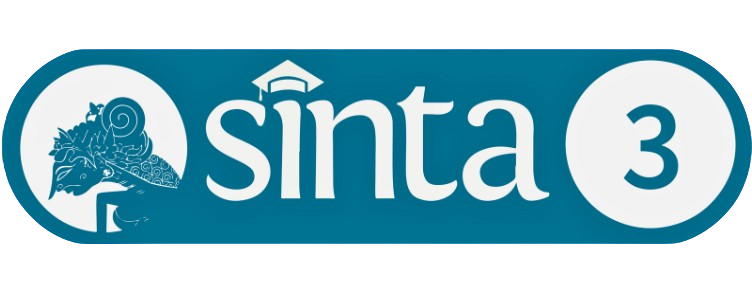Hubungan Adversity Quotient dengan Intensi Wirausaha pada Mahasiswa Universitas Airlangga
Unduhan
Indonesia masih tertinggal dalam hal rasio jumlah pengusaha terhadap populasi jika dibandingkan dengan negara tetangga. Pemerintah melalui program-programnya telah mendorong mahasiswa untuk berwirausaha. Namun, hanya sedikit lulusan perguruan tinggi yang berwirausaha. Hal tersebut juga terjadi di Universitas Airlangga. Hal ini berkaitan dengan intensi wirausaha pada mahasiswa. Faktor psikologis yang berpengaruh salah satunya adalah adversity quotient. Penelitian ini bertujuan untuk mengetahui hubungan adversity quotient dengan intensi wirausaha pada mahasiswa Universitas Airlangga. Pengumpulan data melalui survei online. Jumlah subjek 151 mahasiswa UNAIR. Analisis data menggunakan uji korelasi Spearman's Rho menggunakan SPSS 23.0 for Macintosh. Hasil analisis menunjukkan adanya hubungan yang kuat dengan arah positif antara adversity quotient dengan intensi wirausaha.
Amatillah, M. (2017). Pengaruh kecerdasan emosional terhadap intensi kewirausahanan dengan entrepreneurial self-efficacy sebagai variabel mediator [Skripsi, Universitas Airlangga]. https://repository.unair.ac.id/59882/
Badan Pusat Statistik. (2019). Keadaan Ketenagakerjaan Indonesia Agustus 2019. https://www.bps.go.id/publication/2019/11/29/96138ece33ccc220007acbdd/keadaan-angkatan-kerja-di-indonesia-agustus-2019.html
Bandura, A. (1986). Social foundations of thought and actions: A social cognitive theory. Prentice Hall.
Cable, D. M., & DeRue, D. S. (2002). The convergent and discriminant validity of subjective fit perceptions. Journal of Applied Psychology, 87(5), 875–884. https://doi.org/10.1037/0021-9010.87.5.875
CNN Indonesia. (2018, Oktober 19). Hanya 3,1 Persen Penduduk Produktif di RI yang Wirausaha. https://www.cnnindonesia.com/ekonomi/20181018210657-92-339664/hanya-31-persen-penduduk-produktif-di-ri-yang-wirausaha
Direktorat Pendidikan UNAIR. (2018). Data Statistik Mahasiswa Tahun 2018. http://pendidikan.unair.ac.id/v2/index.php/statistik-2018/
European Comission. (2003). Green Paper”Enterpreneurship in Europe. Commission of the European Communities.
Global Entrepreneurship Monitor. (2020). Economy Profiles: Indonesia. Global Entrepreneurship Monitor.
Grimm, P. (2010). Social desirability bias. In J. Sheth & N. Malhotra (Eds.), Wiley International Encyclopedia of Marketing. John Wiley & Sons, Ltd. https://doi.org/10.1002/9781444316568.wiem02057
Handaru, A. W., Parimita, W., & Mufdhalifah, I. W. (2015). Membangun intensi berwirausaha melalui adversity quotient, self efficacy, dan need for achievement. Jurnal Manajemen Dan Kewirausahaan (Journal of Management and Entrepreneurship), 17(2), 165–176. https://doi.org/10.9744/jmk.17.2.165-176
Johnson, T., & Fredrich, M. (2002). A validation of the Crowne-Marlowe Social Desirability Scale. http://www.srl.uic.edu/publist/Conference/crownemarlowe.pdf
Julita, I., & Prabowo, S. (2018). Intensi Berwirausaha Ditinjau Dari Adversity Quotient Pada Mahasiswa Program Studi Manajemen Universitas Katolik Soegijapranata Semarang. Psikodimensia, 85–92.
Kemenperin. (2018, November 23). Indonesia Butuh 4 Juta Wirausaha Baru untuk Menjadi Negara Maju. https://www.kemenperin.go.id/artikel/19926/Indonesia-butuh-4-juta-wirausaha-baru-untuk-menjadi-negara-maju
Koran Jakarta. (2018, September 17). Lulusan Perguruan Tinggi Didorong Mampu Ciptakan Lapangan Kerja. Koran Jakarta. https://koran-jakarta.com/lulusan-perguruan-tinggi-didorong-mampu-ciptakan-lapangan-kerja?page=all
Kurniawati, W., & Marlena, N. (2018). The Influence of Self-Efficacy and Adversity Quotient: How is the Vocational Student Entrepreneurial Intention? JPBM (Jurnal Pendidikan Bisnis Dan Manajemen), 4(2), 89–100. https://doi.org/10.17977/um003v4i22018p096
Lam, S. S. K., & Schaubroeck, J. (2000). The role of locus of control in reactions to being promoted and to being passed over: A quasi experiment. Academy of Management Journal, 43(1), 66–78. https://doi.org/10.2307/1556386
Liñán, F., & Chen, Y.-W. (2009). Development and cross-cultural application of a specific instrument to measure entrepreneurial intentions. Entrepreneurship Theory and Practice, 33(3), 593–617. https://doi.org/10.1111/j.1540-6520.2009.00318.x.
Liñán, F., Rodríguez-Cohard, J. C., & Rueda-Cantuche, J. M. (2011). Factors Affecting Entrepreneurial Intention Levels: A Role for Education. International Entrepreneurship and Management Journal, 7(2), 195–218. https://doi.org/10.1007/s11365-010-0154-z
LP3i. (2020). 5 Peran Mahasiswa dalam Masyarakat, Calon Maba Harus Tahu. https://www.lp3i.ac.id/5-peran-mahasiswa-dalam-masyarakat-calon-maba-harus-tahu/
Lyubomirsky, S., Caldwell, N. D., & Nolen-Hoeksema, S. (1998). Effects of ruminative and distracting responses to depressed mood on retrieval of autobiographical memories. Journal of Personality and Social Psychology, 75(1), 166–177. https://doi.org/10.1037/0022-3514.75.1.166
Mangundjaya, W. H. (2009). The Relationship of Resilience and Entrepreneurial Intention. International Entrepreneurship Congress.
Markman, G. D. (2000). Adversity quotient: the role of personal bounce-back ability in new venture formation. Peak Learning. https://www.peaklearning.com/wp-content/uploads/2019/05/PEAK_GRI_markman.pdf
Markman, G. D., & Baron, R. A. (2002). Individual differences and the pursuit of new ventures: A model of person-entrepreneurship fit. In Advances in Entrepreneurship, Firm Emergence and Growth (Vol. 5, pp. 23–53). Emerald (MCB UP). https://doi.org/10.1016/S1074-7540(02)05003-1
Markman, G. D., & Baron, R. A. (2003). Person–entrepreneurship fit: Why some people are more successful as entrepreneurs than others. Human Resource Management Review, 13(2), 281–301. https://doi.org/10.1016/S1053-4822(03)00018-4
Pérez-López, M. C., González-López, M. J., & Rodríguez-Ariza, L. (2016). Competencies for entrepreneurship as a career option in a challenging employment environment. Career Development International, 21(3), 214–229. https://doi.org/10.1108/CDI-07-2015-0102
Prasasta, Z. D. (2018). Hubungan Antara Adversity Quotient Dengan Intensi Berwirausaha Pada Mahasiswa Psikologi Tingkat Akhir [Skripsi, Sanata Dharma University]. https://repository.usd.ac.id/31455/
Sandi, A. (2017). The influence of Adversity Quotient and Entrepreneurship Education toward Entrepreneurial Intention of Students Social Science Education in Maulana Malik Ibrahim State Islamic University Malang. [Skripsi, Universitas Islam Negeri Maulana Malik Ibrahim]. http://etheses.uin-malang.ac.id/9849/
Srimulyani, V. A. (2013). Analisis pengaruh kecerdasan adversitas, internal locus of control, kematangan karir terhadap intensi berwirausaha pada mahasiswa bekerja (Studi emperis pada mahasiswa kelas karyawan unika widya mandala madiun). Widya Warta: Jurnal Ilmiah Universitas Katolik Widya Mandala Madiun, XXXVII(01), 96–110.
Stoltz, P. G. (2000). Adversity Quotient: Mengubah Hambatan Menjadi Peluang. PT. Grasindo.
The World Bank. (2019). Unemployment with advanced education (% of total labor force with advanced education) - Singapore. https://data.worldbank.org/indicator/SL.UEM.ADVN.ZS?locations=SG
Widyastuti, T., & Ratnaningsih, I. Z. (2018). Hubungan antara person job-fit dengan kepuasan kerja pada karyawan kantor pusat bank jateng semarang. Jurnal Empati, 7(3), 73–79. https://doi.org/10.14710/empati.2018.21746
Wisesa, D., & Indrawati, K. R. (2016). Hubungan adversity quotient dengan motivasi berwirausaha pada mahasiswa universitas udayana yang mengikuti program mahasiswa wirausaha. Jurnal Psikologi Udayana, 3(2), 187–195. https://doi.org/10.24843/JPU.2016.v03.i02.p02
Hak Cipta (c) 2022 Audi Farhan Prabowo, Rosatyani Puspita Adiati

Artikel ini berlisensi Creative Commons Attribution 4.0 International License.
BRPKM adalah terbitan berkala dengan akses terbuka Creative Commons Attribution 4.0 International (CC-BY 4.0) sehingga hak cipta tetap berada di tangan penulis.
Dengan lisensi ini, siapapun berhak menggunakan informasi dan melakukan re-distribusi konten yang dimuat dalam jurnal ini untuk kepentingan apapun, termasuk kepentingan komersial. Hal tersebut dapat dilakukan selama memenuhi dua kondisi, yaitu; (1) anda harus memberikan atribusi dengan mengutip sumber tautan aslinya, dan menyatakan apabila ada perubahan yang dilakukan; dan (2) anda tidak dapat menggunakan ketentuan hukum atau sarana kontrol teknologi yang secara hukum dapat membatasi orang lain untuk melakukan hal-hal yang diizinkan oleh lisensi ini.
Redaksi jurnal tidak akan meminta penulis untuk melakukan persetujuan transfer hak cipta atas semua naskah yang diterbitkan.










